Last updated on June 12th, 2022
Several studies conducted by different groups of experts from different parts of the world have claimed countless health benefits of yoga. Experts say, it not only helps improve your physical health but also has astonishing benefits on your mental health (1). Yes, there are yoga poses for mental health practising in which you can reduce stress, get peace of mind and improve your daily routine.
Yoga is the practice of quieting the mind ~Patanjali Sutras
This article explains how yoga can improve your mental health and which yoga poses are most effective to improve your mental health. I have also included my experience with Yoga.
My Story of Mental Health Recovery with Yoga
Yoga works on the level of your body, mind, emotion, and energy. Besides that, it helps reduce depression, fatigue, anxiety disorders, and stress. There is no doubt that yoga improves mental health, but I have my personal recovery story from Yoga also.
Here is my story about how I recovered my mental health by practising yoga poses. I have been the victim of two heart diseases (pulmonary stenosis– a shrinkage in one of my heart valves, and atrial septum defect– a hole in my heart).
Therefore, I had to go through a lot of mental trauma alongside my poor physical health. Amidst this chaos, I had distorted my mental health in a way you can’t imagine. I was often lost in my thoughts thinking about my career, future and health.
Well, doctors treated my disease with two heart surgeries but they failed to cure my mental health! The demon called depression was torturing my soul. Then my mother helped me to come out of my room and practice the breathing techniques and yoga poses to improve my mental health.
In starting I was so irregular, but gradually I developed an interest in Yoga. It made me focus on my breath. I found myself in good mood after doing Yoga poses. It was like finding myself again.
All I can say, in this scary journey, I found yoga a life-saving practice. I strongly admit that I am at peace today because of yoga and meditation.
Yoga for mental health: Truth or Myth?
Several medical pieces of research in recent years have uncovered many mental benefits that yoga offers, corroborating the experiences of millions of practitioners (2,3).
Also read,
How Yoga Improves Mental Health and Happiness
It decreases cortisol (the main stress hormone), thus helping curb major mental health problems such as anxiety disorder, stress, and schizophrenia. It reduces the severity of depression and improves mental happiness.
Therefore, yoga and its techniques are worth giving a try even if you don’t feel the need at the hour. It is also for general mood making and raises you high in your daily activities.
Here are the 7 most effective yoga poses to improve mental health and provide other health benefits also:
1. Balasana (Child Pose)
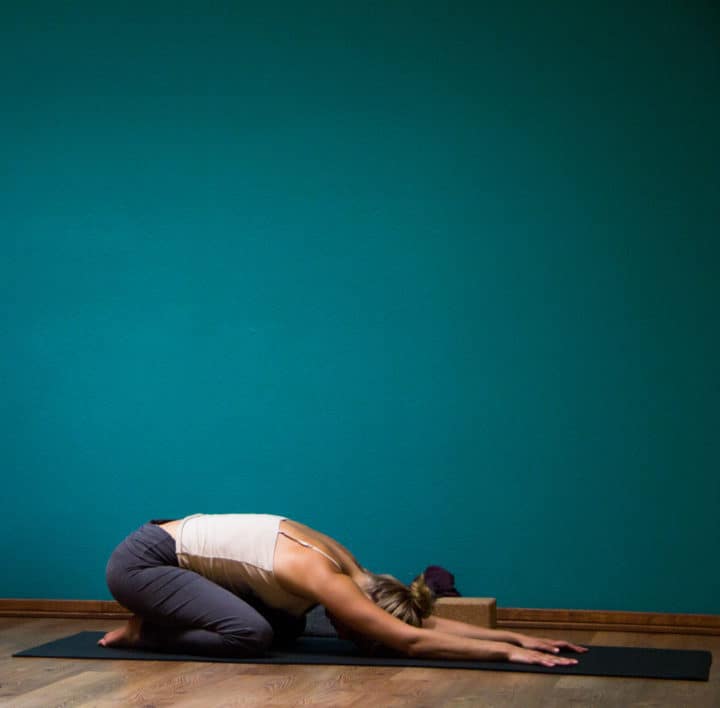
Bal means the child. Asana means pose. It helps you relax, calm down and relieve stress and fatigue. The child pose is one of the best yoga poses for mental health suggested by yoga experts.
Techniques
- Get down on your knees and keep your spine erect. Make sure, your big toes are touching each other but keep the knees apart.
- Inhale, look up and stretch the back.
- Now, exhale and begin bending forward to bring the chest to your thighs and your forehead to touch the ground beyond your knees.
- Straighten your arms to the back and lay them down on the floor next to your hips or bring the arms in front of your body as far as they can reach.
- Hold the pose for around 20-25 seconds.
- To release the pose, inhale, raise your head and slowly bring your torso back up.
- Exhale and release the pose.
Other benefits
- It restores balance in the body.
- This pose releases the tension in the back, shoulders, and chest.
Precaution
- You better use pillows instead of placing your head on the floor.
- Don’t practice it if you are suffering from diarrhoea, heart problems or a knee injury.
2. Shavasana (Corpse Pose)
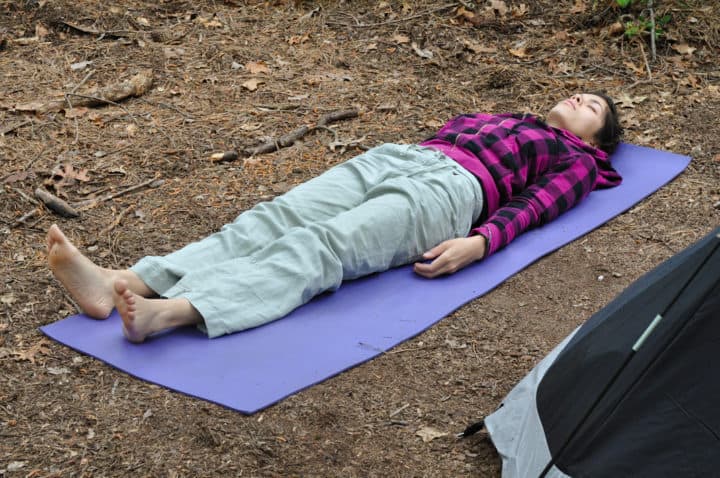
Shava means dead body. The final position in this asana resembles a dead body. Shava Asana not only improves your mental health but also helps relax your body.
- Helps relieve all kinds of tensions and gives rest to both body and mind.
- Relaxes the whole psycho-physiological system.
- The mind, which is constantly attracted to the outer world, and bubbling up with useless thoughts moves inwards, thus gradually getting absorbed; as the mind turns quiet and absorbed. It soothes your brain cells.
Techniques
- Lie down on your back and keep your legs apart. Also, keep the hands at least 15 cm away from your body.
- Allow the fingers to curl up slightly but don’t put any strain.
- Palms facing the ceiling and keep your eyes closed.
- Keep your head and spine in a straight line, and make sure your head won’t fall to the side.
- Relax the whole body consciously.
- Become aware of the natural breath and allow it to become rhythmic and slow.
- Remain in the position till you feel refreshed and relaxed.
Precaution
None
3. Tadasana (Palm Tree Posture or Mountain Pose)
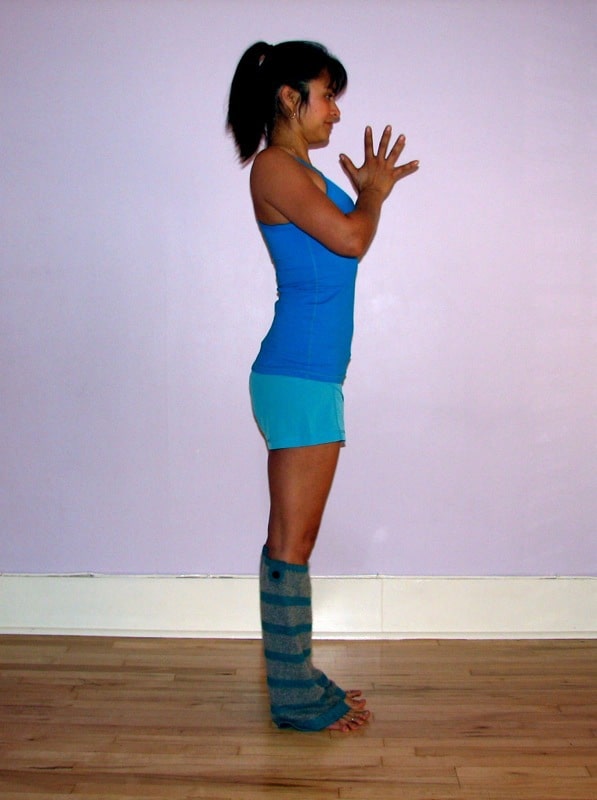
Mountain pose is another one of the best yoga poses for mental health you should practice while in distress. Tada means palm tree or mountain. It is a standing pose. This asana is to obtain stability and firmness.
- It helps clear up congestion of the spinal nerves.
- It relieves tension, aches, and pains throughout the body.
- Improves blood circulation and you feel more energetic and enthusiastic.
- It helps to reduce anxiety.
Techniques
- Stand with feet 2 inches apart and the arms by the side.
- Make sure your heels and big toes are touching each other.
- Raise the heels off the floor and balance on the toes.
- Stay in this position for 10 -15 seconds.
- Exhale, and bring the heels down.
- Come back to a standing posture.
Other benefits
- This asana brings stability to the body,
- It helps clear up congestion of the spinal nerves.
- Corrects faulty posture.
- It also helps to increase height up to a certain age.
Precaution
Don’t practice it in acute cardiac problems, varicose veins, and vertigo.
4. Uttanasana (Standing Forward Bend Pose)
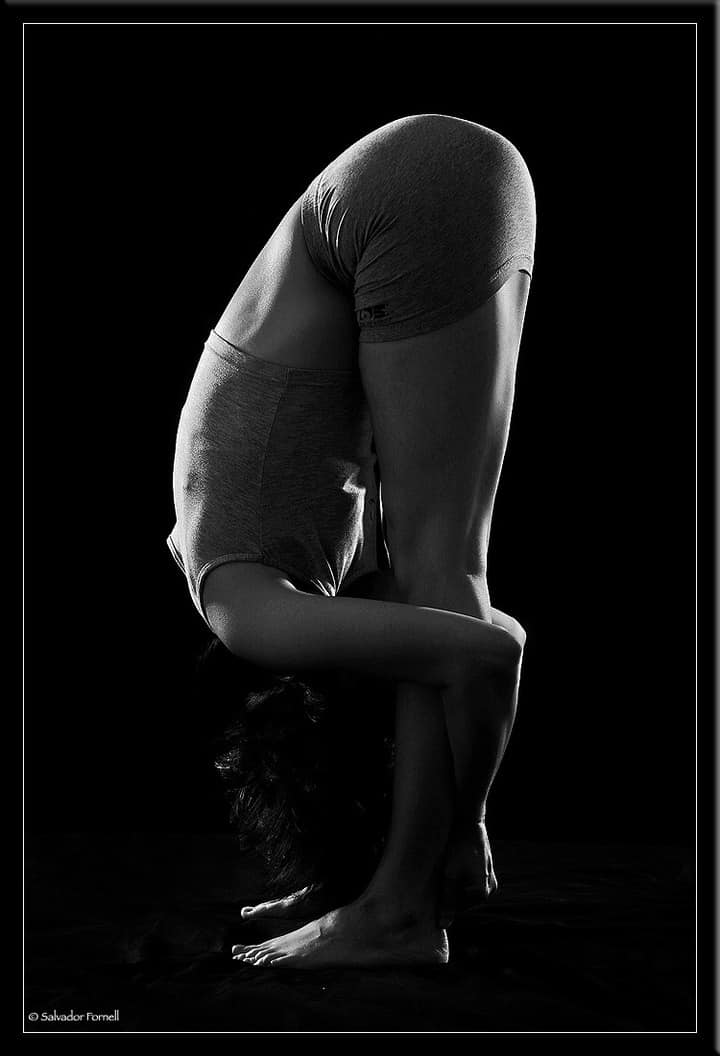
Ut refers to deliberation, intensity Tan – stretch, extend. Asana means- pose, and exercise. Uttanasana helps to improve mental health by relieving depression instantly. Yogis say that if you remain in this pose for half an hour, your depression will extinguish undoubtedly and completely.
- This Asana is like medicine for depression. If you are feeling any kind of depression, practice it.
- Any type of anxiety will be removed quickly if you remain in this pose for 2 minutes.
- It cures the heaviness of the head.
- If you get anxious easily, it is the best thing to do.
Techniques
- Begin with standing in the Tadasana pose.
- Bend your knees slightly, exhale and bend forward from the hip and fold your torso over your legs.
- Place the palms on the floor next to your feet or to the backs of your ankles. Keep the knees straight.
- Try to hold the head up, inhale and stretch the spine. Move the head a little forward towards the head and try to keep the legs at 90 degrees from the floor.
- Stay in this position and take two deep breaths.
- Exhale and bring the forehead as close to the knees as is comfortable.
- Hold this position for a minute and keep taking deep breaths evenly.
- Do not strain, keep the knees straight and don’t block them.
- Inhale and raise the head from the knees and don’t lift the palms from the floor instantly.
- Take a deep inhalation and now lift your hands slowly from the floor and now come back to Tadasana.
Other benefits
- Activates inner legs.
- Cures stomach pain, and curbs liver problems. It works as a pain relief medicine for women during the menstrual period.
- It is good for spinal health and for kidneys too.
Precaution
Don’t practice it if you are having knee, back problems, heart problems, and sciatica.
5. Vrksasana (Tree Pose)
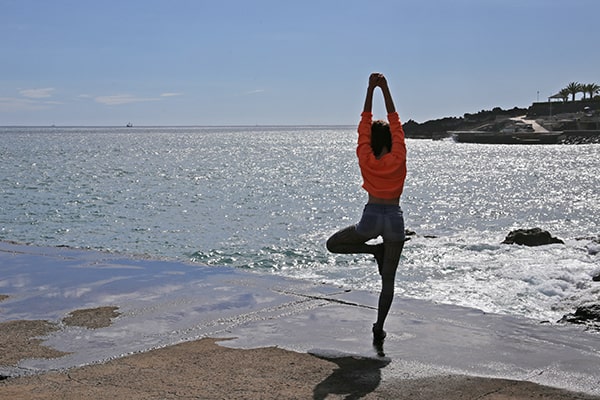
Vrksa refers to the tree. The final position of this asana resembles the shape of a tree.
- It changes you emotionally and helps fight your bad moods daily, depending on many emotional factors like your general mood.
- This asana reduces anxiety and mental stress.
- It cools you down and helps curb your panicking habits.
- Vrksasana also increases your concentration power.
Techniques
- Stand with feet 2 inches apart.
- Focus on a point in front.
- Exhale, raise your right leg bend the knee and place the foot on the inside of the left thigh. The heel should be touching the perineum.
- Inhale extend the arms over your head and let your palms meet together.
- Stretch the whole body from top to bottom without losing balance.
- Stay in the position for 10 to 30 seconds and breathe normally.
- Exhale and bring the arms and right foot down.
- Relax and repeat asana on another side.
Other benefits
- Improves neuromuscular coordination, balance, endurance, and alertness.
- It tones up the leg muscles and rejuvenates the ligaments also.
Precaution
Don’t practice it in arthritis, vertigo and headache also.
6. Makarasana (Crocodile Posture)
In Sanskrit, Makara means crocodile. In this asana, the body resembles a crocodile. It is indicated to counter stress and anxiety.
Techniques
- Lie down on your stomach gently.
- Separate your legs pointing outward.
- Bend both the arms and place the right hand on the left hand.
- Now put the forehead on your hands.
- Now close your eyes and feel the relaxation energy through your veins.
Other benefits
- Promotes relaxation of the lower back.
- Helps in the recovery of back problems.
- Indicated for all orthopaedic ailments.
Precaution
Avoid it in Low blood pressure, severe cardiac problems, and pregnancy.
7. Setubandhasana (The Bridge Posture)
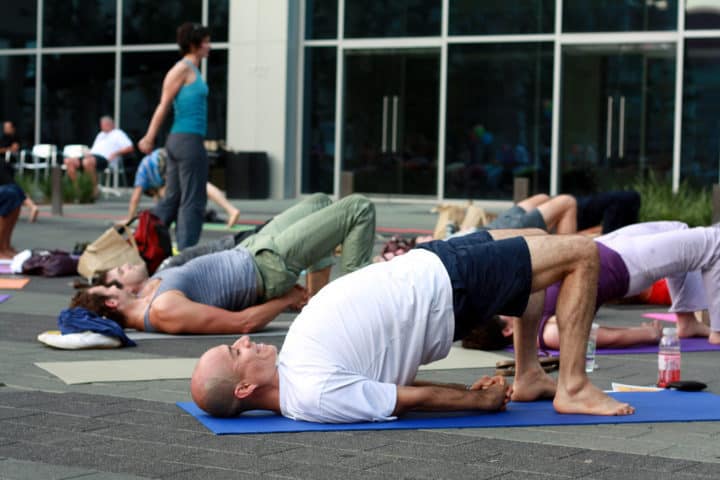
Setu bandha means the formation of a bridge. In this posture, the body is positioned like a bridge, hence the name. This is also called Catuspadasana.
It relieves depression and anxiety and strengthens the lower back muscle.
Techniques
- Lie down on your back, place your hands on the floor beside the hips and keep your palms facing downwards.
- Bend both the legs at the knees and bring the heels near the hips and apart.
- Inhale; slowly raise your buttocks and arch your back as much as you can to form the bridge.
- Raise the chest, stomach, and waist towards your head as high as possible but do not strain.
- Remain in this position for 10-30 seconds and take normal and even breaths.
- Exhale, slowly return to the original position and relax in savasana.
- In the final position, place the shoulders and head on the floor.
Other benefits
- This pose helps stretch abdominal organs
- It improves digestion and helps relieve constipation.
Precaution
Don’t practice it if you are suffering from ulcers and hernia, and women in advanced stages of pregnancy should not practise this asana.
Pranayama to Reduce Stress
It helps to develop an awareness of the mind and establish control over the mind. Several studies have proved that Pranayama does help in the actual formation of new synapses in the brain. Students should practice it before their exams for mental harmony and better results (5,6,7).
Anulom -Vilom
This is one of the best things I ever found to calm the mind instantly. This Pranayama soothes your brain cells.
It would be an injustice to you if I tell yoga poses to curb stress and not mention the Anulom-Vilom practice. Anulom- Vilom pranayama tops the list of yoga exercises when it comes to getting instant relief from stress.
There are also many other breathing exercises to do like Kapalbhati, Brahmari, and Bhastrika but my personal experience is if you are doing it perfectly, you won’t need any other Pranayama.
Also, you can start others later, but it would be a good practice to start with Anulom-Vilom. Once you are comfortable with it, you can slowly increase the number.
It increases the oxygen level in your lungs and brain eradicates breathing imbalances and calms your mind.
Technique
- Sit in any meditative posture such as cross-legged or whatever posture you find comfort in.
- Erect the spine and head straight with eyes closed.
- Keep the left palm on the left knee.
- Connect the thumb and the forefinger tip to tip.
- Keep the other fingers straight but in a relaxed state.
- Place the thumb of the right hand on the right nostril, now fold the middle and index fingers of the right hand and put the ring and small fingers on the left nostril.
- And now, put the right thumb on the right nostril.
- Inhale from the left nostril; then close the left nostril and release the thumb from the right nostril. Exhale through the right nostril.
- Now, inhale through the right nostril.
- After inhaling, close the right nostril, open the left nostril and breathe out.
Here completes one round of the Anuloma Viloma Pranayama. Repeat 5 rounds.
You can watch the Anulom-Vilom technique here.
Note 1
While inhaling, focus your mind on the process. Feel…. as all the positive and good vibes, you are taking in through your breath and while exhaling you are throwing out all the diseases and depression from your body.
Just focus on it and see the miracle after the practice.
Note 2
Breathing should be slow and controlled.
Ratio and timing
If you have just started it, keep the duration of inhalation and exhalation equal.
Gradually, you should pace your speed and set this ratio – the ratio between inhalation and exhalation should be 1:2.
Benefits
The main purpose of this Pranayama is to purify the principal channels of carrying energy called Nadis, hence nourishing the whole body.
It increases vitality and lowers the level of stress and anxiety.
Best Yoga accessories to practice yoga smoothly
Bestselling Yoga Mats
Comfortable Yoga Clothes for Women
Yoga Wears for men
Bottom Line
So, practice these yoga poses for mental health whenever you find yourself in deep stress, depression or any type of anxiety. Yoga is a great tool to improve mental health and fight day-to-day stress.
It’s indeed one of the most important health hacks that keep you both emotionally and physically fit.
These poses are worth giving a try. Join yoga classes or purchase yoga mats, invest in a treadmill & set up your home gym to practise yoga & other forms of exercise daily.
Try these poses and see the outcomes yourself. You would be habitual to them soon and improve the quality of your life eventually.
Here are similar articles you may be interested in :
- Find out how yoga can fire up your metabolism & aid in weight loss
- What is Hatha Yoga and Its Benefits?
- How running improves your mental health)
Before you leave, don’t forget to check out these most loved articles on mental health:
- 40 positive things to say to yourself daily
- Self-acceptance: 11 Ways To Accept Your Reality The Way It Is
- Learn to ignore unnecessary stuff (key to mental happiness)
- Best Massage Chair for Stress Relief (+Full Buying Guide)
I hope this article will help you relieve your stress. If you have additional questions, feel free to ask me in the comment section below. I would love to hear from you and get back to you.
Be sure to sign up & get your free bonus and read more similar articles, updates, and free fitness and wellness tips.
If you liked the post, share it with someone you care about and help them stay mentally healthy and in a positive mood!
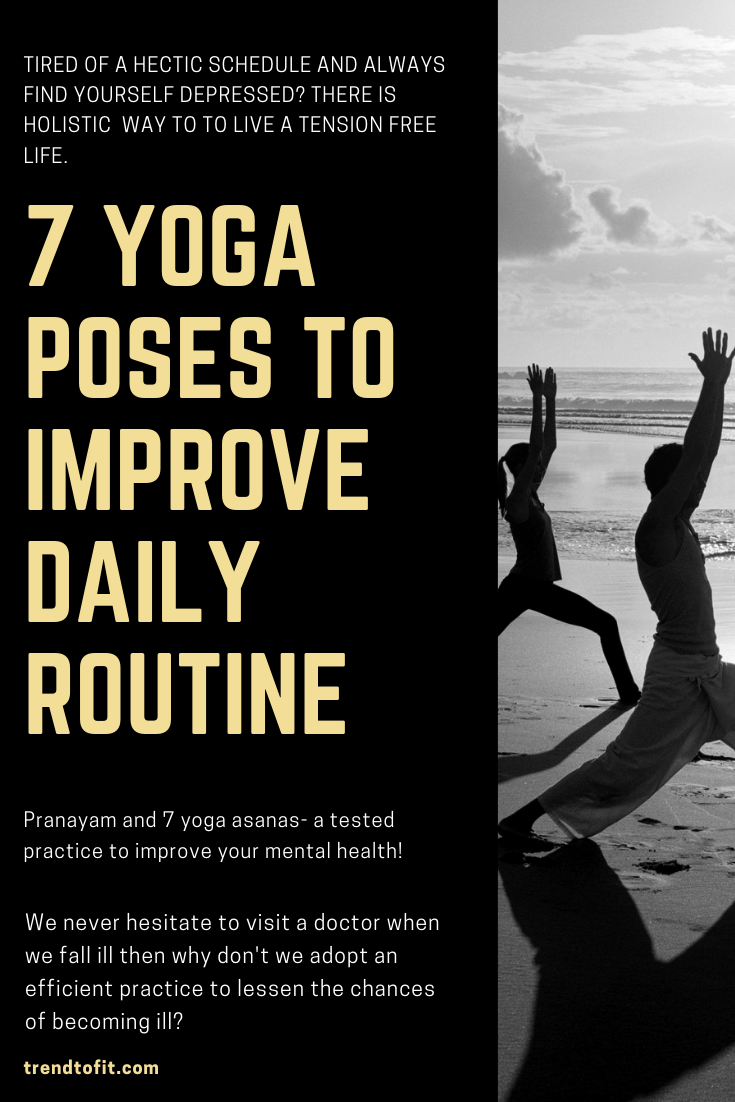
Well, thanks! But this doesn’t seem like my cup of tea.
Very interesting post but this is one thing I just can’t do regularly. Even though, I have done Inner Engineering by Sadhguru, i practiced it for an year or so and then quit. May be your post inspires me to restart it.
Yes, Samira. It is really tough to be regular but once you are habitual to it, you will see its benefits yourself. Good luck for your efforts:)
Thank you for your nomination. Pl chk below
https://www.samirasrecipe.com/2019/04/29/mystery-blogger-award-2019/
I read your post. Lovely answers and your journey is very inspiring:)
Indeed these are some of the best Aasanas that anyone can do.
Yes, they need practice.